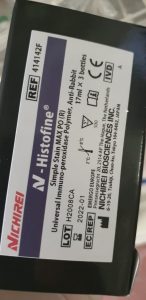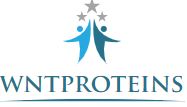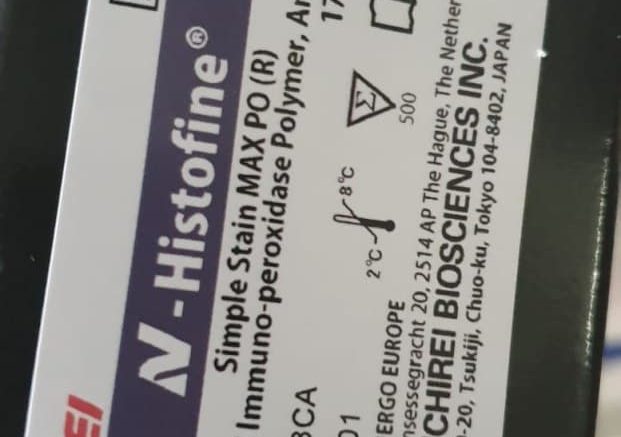Gastric most cancers (GC), a number one reason for cancer-related dying, is a heterogeneous illness. We intention to explain clinically related molecular classifications of GC that incorporate heterogeneity and supply helpful medical data. We mixed completely different gene expression datasets and filtered a 7-gene signature associated to the extracellular matrix (ECM), which additionally exhibited vital prognostic worth in GC sufferers. Interestingly, putative CCCTC-binding issue (CTCF) regulatory parts have been recognized inside the promoters of those ECM-related genes and have been confirmed by chromatin immunoprecipitation sequencing (ChIP-Seq).
CTCF binding websites additionally overlapped with histone activation markers, indicating direct regulation. In addition, CTCF was additionally correlated with the Wnt signaling pathway. A comparability of human GC cell traces with excessive or low expression of ECM-related genes revealed completely different ranges of tumor aggressiveness, suggesting the most cancers development-promoting features of ECM-related genes. Furthermore, CTCF regulated COL1A1 and COLA31 expression in vitro. Silencing CTCF or COL1A1/COL1A3 markedly inhibited cell progress and migration in the metastatic GC cell line BGC823. Collectively, this ECM-related 7-gene signature offers a novel perception for survival prediction amongst GC sufferers. The zinc finger protein CTCF regulates ECM-related genes, thereby selling GC cell progress and migration.
Dysregulation of Wnt/β-catenin signaling by protein kinases in hepatocellular carcinoma and its therapeutic software
Wnt/β-catenin signaling is indispensable for a lot of organic processes, together with embryonic improvement, cell cycle, irritation, and carcinogenesis. Aberrant activation of the Wnt/β-catenin signaling can promote tumorigenicity and improve metastatic potential in hepatocellular carcinoma (HCC). Targeting this pathway is a brand new alternative for exact drugs for HCC. However, inhibiting Wnt/β-catenin signaling alone is unlikely to considerably enhance HCC affected person consequence owing to the lack of particular inhibitors and the complexity of this pathway. Combination with different therapies can be an necessary subsequent step in bettering the efficacy of Wnt/β-catenin signaling inhibitors.
Protein kinases play a key and evolutionarily conserved function in the Wnt/β-catenin signaling and have turn out to be certainly one of the most necessary drug targets in most cancers, concentrating on Wnt/β-catenin signaling and its regulatory kinase collectively can be a promising HCC administration technique. In this assessment, we summarize the kinases that modulate the Wnt/β-catenin signaling in HCC and briefly focus on their molecular mechanisms. Furthermore, we record some small molecules which goal the kinases and should inhibit Wnt/β-catenin signaling to supply new views for preclinical and medical HCC research.

The RNA helicase Dhx15 mediates Wnt-induced antimicrobial protein expression in Paneth cells
RNA helicases play roles in varied important organic processes resembling RNA splicing and modifying. Recent in vitro research present that RNA helicases are concerned in immune responses towards viruses, serving as viral RNA sensors or immune signaling adaptors. However, there’s nonetheless a scarcity of in vivo knowledge to assist the tissue- or cell-specific perform of RNA helicases owing to the lethality of mice with full knockout of RNA helicases; additional, there’s a lack of proof about the antibacterial function of helicases.
Here, we investigated the in vivo function of Dhx15 in intestinal antibacterial responses by producing mice that have been intestinal epithelial cell (IEC)-specific poor for Dhx15 (Dhx15 f/f Villin1-cre, Dhx15ΔIEC). These mice are inclined to an infection with enteric micro organism Citrobacter rodentium (C. rod), owing to impaired α-defensin manufacturing by Paneth cells.
Moreover, mice with Paneth cell-specific depletion of Dhx15 (Dhx15 f/f Defensinα6-cre, Dhx15ΔPaneth) are extra inclined to DSS (dextran sodium sulfate)-induced colitis, which phenocopy Dhx15ΔIEC mice, as a consequence of the dysbiosis of the intestinal microbiota. In people, diminished protein ranges of Dhx15 are discovered in ulcerative colitis (UC) sufferers. Taken collectively, our findings determine a key regulator of Wnt-induced α-defensins in Paneth cells and provide insights into its function in the antimicrobial response in addition to intestinal irritation.
Protein arginine methyltransferase 5 (PRMT5) prompts WNT/β-catenin signalling in breast most cancers cells through epigenetic silencing of DKK1 and DKK3
Protein arginine methyltransferase 5 (PRMT5) exercise is dysregulated in many aggressive cancers and its enhanced ranges are related to elevated tumour progress and survival. However, the function of PRMT5 in breast most cancers stays underexplored. In this examine, we present that PRMT5 is overexpressed in breast most cancers cell traces, and that it promotes WNT/β-CATENIN proliferative signalling by epigenetic silencing of pathway antagonists, DKK1 and DKK3, resulting in enhanced expression of c-MYC, CYCLIN D1 and SURVIVIN.
Through chromatin immunoprecipitation (ChIP) research, we discovered that PRMT5 binds to the promoter area of WNT antagonists, DKK1 and DKK3, and induces symmetric methylation of H3R8 and H4R3 histones. Our findings additionally present that PRMT5 inhibition utilizing a particular small molecule inhibitor, compound 5 (CMP5), reduces PRMT5 recruitment in addition to methylation of H3R8 and H4R3 histones in the promoter areas of DKK1 and DKK3, which consequently outcomes in diminished expression CYCLIN D1 and SURVIVIN.
Furthermore, CMP5 remedy both alone or in mixture with 5-Azacytidine and Trichostatin A restored expression of DKK1 and DKK3 in TNBCs. PRMT5 inhibition additionally altered the progress traits of breast most cancers cells and induced their dying. Collectively, these outcomes present that PRMT5 controls breast most cancers cell progress by epigenetic silencing of WNT/β-CATENIN pathway antagonists, DKK1 and DKK3, ensuing in up-regulation of WNT/β-CATENIN proliferative signalling.
Meningioma-associated protein 30 accelerates the proliferation and invasion of hepatocellular carcinoma by modulating Wnt/GSK-3β/β-catenin signaling
Meningioma-associated protein 30 (MAC30) has been not too long ago recognized as a brand new tumor-associated protein that’s implicated in a number of tumor varieties. However, the function of MAC30 in hepatocellular carcinoma (HCC) has not been studied. In the present examine, we explored the expression, organic perform and underlying mechanism of MAC30 in HCC. We discovered that MAC30 expression was considerably elevated in HCC tissues and cell traces. Functional in vitro assays demonstrated that the knockdown of MAC30 inhibited the proliferation and invasion of HCC cells, whereas MAC30 overexpression facilitated these organic behaviors.
Moreover, the knockdown of MAC30 decreased glycogen synthase kinase (GSK)-3β phosphorylation degree and β-catenin expression, resulting in the inactivation of Wnt/β-catenin signaling in HCC cells. The inhibition of GSK-3β or reactivation Wnt/β-catenin signaling markedly reversed MAC30 knockdown-mediated inhibitory results on the proliferation and invasion of HCC cells. Notably, the inhibition of Wnt/β-catenin signaling abrogated the MAC30-evoked oncogenic function in HCC cells.
[Linking template=”default” type=”products” search=”Anti-Nuclear Pore Complex Proteins” header=”3″ limit=”166″ start=”4″ showCatalogNumber=”true” showSize=”true” showSupplier=”true” showPrice=”true” showDescription=”true” showAdditionalInformation=”true” showImage=”true” showSchemaMarkup=”true” imageWidth=”” imageHeight=””]
In addition, the knockdown of MAC30 impeded tumor formation and the progress charge of HCC cells in vivo. Taken collectively, our knowledge acknowledged MAC30 as a possible tumor-promotion issue in HCC, which accelerated the proliferation and invasion of HCC by the up-regulation of Wnt/β-catenin signaling. Our examine suggests MAC30 as a possible anticancer goal for HCC.

